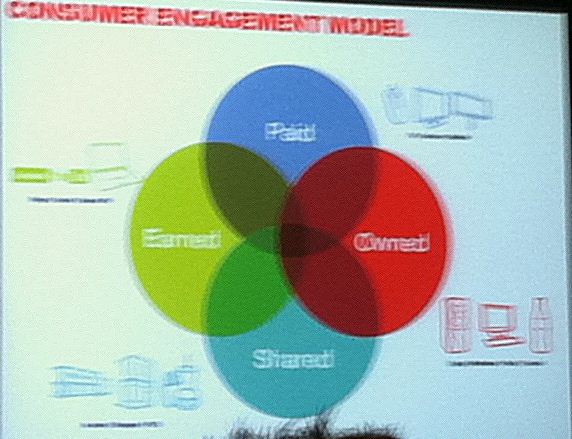Coca-Cola is an undeniable tour de force on the web – Brafton recently reported that it’s No. 1 for social media marketing. At ad:tech New York, Coke’s senior vice president of integrated marketing, Wendy Clark, said the secret to the brand’s success is storytelling, and she suggests consumer-relevant content marketing can help more businesses become household names.
Clark explained the evolution of marketing. In the 1980s, she suggested, companies were able to send out a single brand message for the masses to embrace. Gradually, businesses started segmenting consumers into different demographics and creating content for each of these audiences became the norm. Now, the game has completely changed. “Consumers expect you to engage them on an individual level,” she said.
In the current marketing landscape, she explained that marketers must engage their audiences in a personal way, and they have to be prepared to leverage their brand story across the web to find audiences wherever they are online. Additionally, she says successful brand stories “have no dead ends” – they always give consumers opportunities to engage further on their media of choice.
Here’s Coke’s three-part formula for content marketing success:
Stories.
Coke studies “great story tellers,” Clark said, because the company understands it’s not enough to put content out on the web – it has to be actionable content that will make people remember a business.
She referenced the statistic that 42 hours of content are uploaded every minute to YouTube to demonstrate that the web is an increasingly cluttered space. “The world is not lacking for content,” Clark said. It is, however, often lacking quality content. Investing in content marketing is a worthwhile endeavor.
Additionally, she pointed out that the best stories are the ones that are real. It’s important to allow customers to co-author the content, both via user-generated content and by turning customer experiences into stories for site content, video content, etc. The story around how customers use products or services is just as (if not more) important than the story businesses set out to tell. The authenticity of these user accounts will shine through, and they’ll help marketers gain advocates among customers who recognize their own experiences.
Spread.
Having great stories is only the first step to content marketing success. Brand stories need to be distributed across websites, social networks, video platforms, ad campaigns, etc. Clark pointed out that marketers must adapt their content investment into the channels that offer the most engagement.
Monitoring the impact of owned, paid, earned and shared media will help businesses understand where they can gain the most interaction. Clark advised marketers to constantly look for the intersection of these content segments and strive to understand which (and which combinations) provide the most reach. Real-time analytics will help ensure “the now informs the new and next” to drive engagement.
By focusing on engagement, she said marketers are guaranteeing “spread.” In the current climate, businesses need to move beyond interactions with their customers and look to create brand experiences among customers and their friends. She cites a Fanta phone app that lets Coca-Cola fans prank call each other and then post the conversation to Facebook. The fun-spirited game lets Fanta drinkers have branded experiences with friends, and then this activity is shared online to engage customers’ friends of friends.
For Coke, engaging Facebook fans’ friends has been critical to growth. Clark claims the company’s Facebook network offers one degree of separation to 750 million of Facebook’s 800 million users. Indeed, Brafton has reported that all businesses can exponentially increase their social reach by targeting friends of fans.
Clark went on to say marketers must be sure they’re producing content that is worth-sharing if they want it to be passed on to fans’ friends and, ultimately, foster sales.
Value.
When it comes to adding value to users, Clark spoke about Coke’s principles of valuable content (which Brafton has covered in a related blog post). A key takeaway is that it is essential to listen to the needs of customers and focus on what they want. Clark shared an adage she lives by: We are given two ears and one mouth because we should listen twice as much as we speak. By honing in on what makes customers and prospects tick through social monitoring, generating content that will be shared is a much simpler task. “If we do our job of sharing relevant content with these fans, they become our salesforce.”
She also emphasized that valuable content must be relevant. Coke focuses on balancing timely topics and demands with a consistent message – and Clark advises marketers to follow suit. Content that offers value to users hits on trends without diluting sustainable brand messages. Businesses have to be both relevant and consistent at scale.
And part of being relevant, Clark said, is being on the right channels. With this in mind, businesses have to integrate every online marketing platform, fueling each with content and pointing users to related campaigns where they can continue their brand experience.
Coke’s keynote is part of an apparent ad:tech trend, with attendees talking about the need to produce valuable content that is social in nature. As Brafton reported, experts in attendance suggest that SEO is foundational to social sharing and content discovery across the web.



